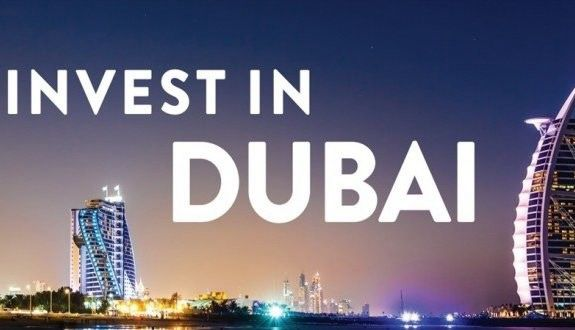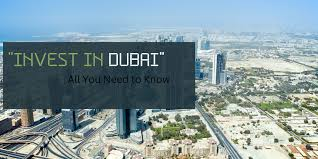Now Reading: Dubai Property: 5 Powerful Ways to Maximize Rental Income Tax-Free in 2025
-
01
Dubai Property: 5 Powerful Ways to Maximize Rental Income Tax-Free in 2025
Dubai Property: 5 Powerful Ways to Maximize Rental Income Tax-Free in 2025

Table of Contents
Dubai’s real estate market in 2025 is a global investment hub, with 99,000 transactions worth AED 326.7 billion in H1 and projected 5-9% price growth, per Dubai Land Department (DLD) data. Offering 6-10% rental yields, the market benefits from no personal income tax, capital gains tax, or annual property tax, with residential leases zero-rated for VAT (0%), per Federal Tax Authority (FTA) rules.
This tax-free environment makes Dubai ideal for maximizing rental income, though hidden costs like service charges (AED 10-30/sq.ft.) and 5% municipality housing fees can erode returns if not managed. Regulated by RERA under Law No. 6 of 2019, Dubai ensures transparency and escrow accounts. Below are five powerful strategies to maximize tax-free rental income in 2025, leveraging Dubai’s tax-advantaged landscape to optimize returns.
1. Target Short-Term Rentals in High-Demand Areas
Short-term rentals in areas like Dubai Marina and Downtown Dubai yield 18-20% higher returns than long-term leases, per industry data from Colife. A AED 1 million studio in Dubai Marina rents for AED 8,000-12,000/month (AED 96,000-144,000/year) short-term versus AED 80,000/year long-term, boosting income by AED 16,000-64,000. Residential leases are VAT-exempt, saving AED 4,800-7,200/year.
Obtain a holiday home permit (AED 1,500) via DLD’s Ejari system and list on platforms like Airbnb, ensuring compliance to avoid AED 5,000-10,000 penalties. Budget service charges (AED 15-20/sq.ft.) for 6-8% yields.
2. Leverage Qualifying Free Zone Person (QFZP) Structures
Setting up a Qualifying Free Zone Person (QFZP) entity in free zones like DMCC or Jebel Ali Free Zone (JAFZA) exempts rental income from 9% corporate tax for 50 years, per FTA rules. For a AED 2 million Business Bay property yielding AED 140,000/year (7%), a QFZP saves AED 12,600 in tax.
Setup costs AED 15,000-25,000, with annual audits (AED 5,000-10,000). Non-compliance risks AED 50,000 penalties. Register via DMCC or JAFZA portals, pair with VAT-exempt leases (AED 7,000/year savings), and use Mollak for expense tracking, securing 6-7.5% yields.
3. Self-Manage Properties to Eliminate Management Fees

Professional management fees (8-12% of rent) cost AED 9,600-14,400/year for a AED 120,000 rental income property in JVC. Self-managing via RERA’s Ejari system (AED 219.75) eliminates these fees while ensuring VAT-exempt leases (AED 6,000-12,500/year savings). Use platforms like Dubizzle for tenant sourcing and Mollak for transparent expense tracking to avoid AED 5,000-10,000 overbilling penalties. Target expat families for stable tenancy, maintaining 7-9% yields.
4. Utilize Emirati or Veteran Housing Fee Exemptions
Emirati tenants or UAE veteran owners with military ID are exempt from the 5% municipality housing fee, saving AED 6,000-12,500/year on AED 120,000-250,000 rent for a AED 2 million Dubai Hills Estate apartment, per DLD rules. Non-Emirati tenants in Dubai South may qualify for 2.5% subsidies (AED 3,000-6,250). Submit tenant Emirates ID or owner military ID via Ejari to avoid AED 5,000 penalties. Combine with 0% VAT on residential sales (AED 100,000) for 6-8% yields.
5. Invest in Off-Plan Properties with Payment Plans
Off-plan properties in high-growth areas like Dubai South or Dubai Creek Harbour offer 5-20% discounts (AED 24,000-100,000 on a AED 480,000-2 million property) and flexible 70/30 payment plans, per DLD data. These reduce upfront costs, allowing higher rental income allocation.
A AED 480,000 Dubai South studio yields AED 43,200/year (9%), with 4% DLD waivers (AED 19,200 savings). Verify escrow accounts via Oqood to avoid AED 10,000-50,000 penalties. Pair with VAT-exempt leases and QFZP structures for 7-9% yields.
Why These Strategies Maximize Tax-Free Income
These five strategies targeting short-term rentals, leveraging QFZP structures, self-managing properties, utilizing housing fee exemptions, and investing in off-plan properties save AED 6,000-100,000 annually and avoid penalties of AED 5,000-50,000, per DLD’s AED 761 billion 2024 transactions.
Combined with 0% VAT on residential sales (AED 24,000-100,000), VAT-exempt leases (AED 4,800-12,500/year), and no personal income tax, they boost net yields by 0.5-1%. Budget hidden costs: 4% DLD fees (AED 19,200-80,000), conveyancing (AED 6,000-10,000), and service charges (AED 10-30/sq.ft.). Dubai’s 6.2% GDP growth and 90-95% occupancy drive demand.
Implementation Strategies
- List short-term rentals on Airbnb with a holiday home permit (AED 1,500), ensuring Ejari compliance to avoid AED 5,000-10,000 penalties.
- Register a QFZP in DMCC or JAFZA (AED 15,000-25,000 setup), saving AED 5,040-12,600 in corporate tax, with FTA-compliant audits.
- Self-manage via Ejari (AED 219.75), saving 8-12% management fees (AED 9,600-14,400), and use Mollak for transparency.
- Submit Emirati or veteran IDs via Ejari for housing fee exemptions (AED 6,000-12,500/year), avoiding AED 5,000 penalties.
- Invest in off-plan projects with 5-20% discounts (AED 24,000-100,000) and DLD waivers (AED 19,200-80,000), verifying escrow via Oqood.
- Budget 8-12% for closing costs (DLD, conveyancing) and service charges, using Mollak for transparency.
- Plan home-country taxes: U.S. investors use IRS Form 1118 for DTA credits; Indian investors comply with Liberalised Remittance Scheme ($250,000 limit). Muslim investors budget 2.5% Zakat (e.g., AED 3,000-4,000 on AED 120,000-160,000 rent).
Outlook for Dubai’s 2025 Market

Dubai’s Economic Agenda D33, 2040 Urban Master Plan, and infrastructure like Metro Blue Line and Al Maktoum Airport fuel demand. Despite 76,000 new units, 90-95% absorption rates and RERA protections mitigate oversupply. Off-plan sales with 5-20% discounts and Golden Visa eligibility (AED 2 million+) drive affordability, per Dubai Real Estate Strategy 2033. These strategies ensure 6-10% yields and 8-15% capital gains.
Conclusion
Targeting short-term rentals, leveraging QFZP structures, self-managing properties, utilizing housing fee exemptions, and investing in off-plan properties are five powerful ways to maximize tax-free rental income in Dubai’s 2025 market. Saving AED 6,000-100,000 annually and avoiding penalties, these strategies capitalize on Dubai’s tax-free environment.
With RERA compliance, strategic budgeting, and home-country tax planning, investors can achieve optimal returns in Dubai’s dynamic real estate landscape. Dubai Property
read more: Dubai Real Estate: 6 Tax-Efficient Zones Perfect for High Capital Growth in 2025



















